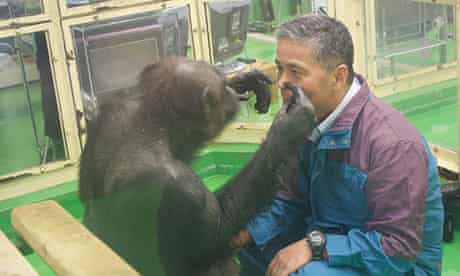“The chimpanzee babies most prone to extended eye-to-eye contact with humans,” writes Sarah Blaffer Hrdy, “were also the ones who had been separated from their mothers and were especially eager to reestablish any kind of contact.”
Hrdy’s Mothers and Others, a study of the evolution of cooperative breeding, is turning into a gold mine for my own Other Mothers final major project – not just in the development of my understanding of the whys of my Other Mothers but in the formation of a visual strategy for eventual exposition.
Gaze, such a hot topic in photographic study and practice, becomes something else in Other Mothers. Mutual gazing, Hrdy expounds, is where much of the magic happens in bond creation, especially between mother and infant.
Until very recently, it was believed mutual gazing for “pro-social purposes” was confined to humans. This assumption rested on a comparative study by psychologist Hans Papousek who looked at humans, captive gorillas and bonobos.
It was assumed that the extended mutual gaze was a human-specific adaption essential for developing “a rich understanding of others’ mental states” – a theory of mind, if you will.
Psychologist Kim Bard upended that assumption via a study of chimpanzees.
She found, writes Hrdy, “chimpanzee mothers spend about 12 minutes of every hour looking at their newborns. Half of the time the mother seems to peer directly into her baby’s face.”
“Ancestral apes would surely have benefited from being better at guessing what someone else intended – from being better able to read the mental states of apprentices as well as of social competitors or potential allies,” says Hrdy.
I shall be exploring ways of including the mutual gaze in my FMP and how other artists have dealt with it.
References
Sarah Blaffer Hrdy (2011). Mothers and others : the evolutionary origins of mutual understanding. Cambridge, Mass.: Belknap Press Of Harvard University Press.
Papoušek M. (1995). Origins of reciprocity and mutuality in prelinguistic parent-infant ‘dialogues’, in Mutualities in Dialogue, eds Markova I., Graumann C. F., Foppa K. (Cambridge: Cambridge University Press)
Bard, K.A. & Leavens, D.A. (2009). Socio-emotional factors in the development of joint attention in human and ape infants. In L. Roska- Hardy & E. Neumann-Held (Eds.), Learning from animals? Examining the nature of human uniqueness (pp. 89-104). London: Psychology Press.




